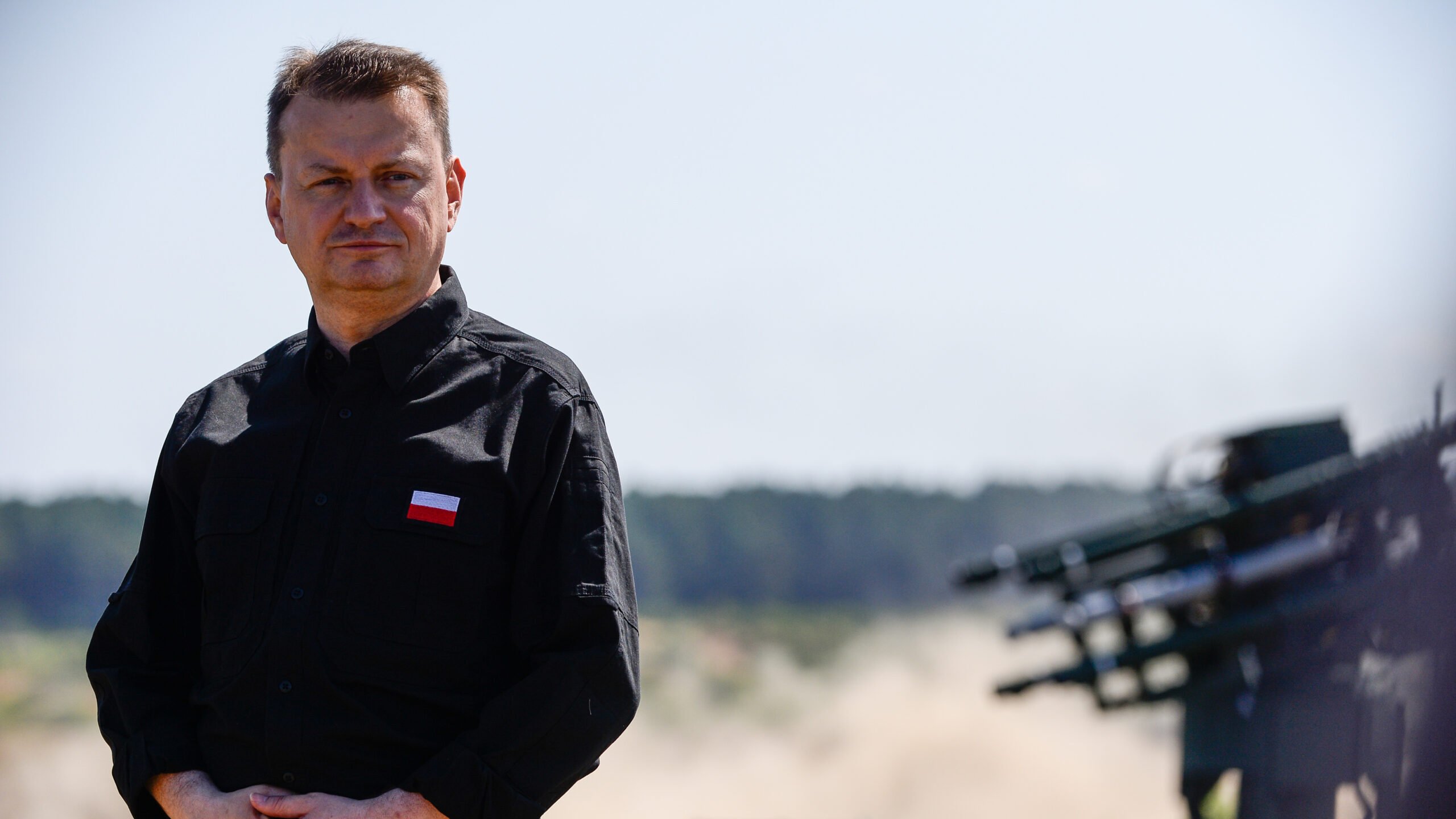
Polish minister of defense Mariusz Błaszczak wants to dramatically increase spending on the military. (Omar Marques/Getty Images)
WARSAW: With much fanfare, Poland’s Minister of National Defense Mariusz Błaszczak and Jarosław Kaczyński, the deputy prime minister who leads Poland’s ruling Law and Justice (PiS) party, used an Oct. 26 press conference to announce they had figured out a new way to boost Polish defense spending.
According to Błaszczak, the government has decided it needs to raise additional funds to increase the Polish Armed Forces to a “minimum” of 250,000 professional members and 50,000 members of the part-time Territorial Defense Force — effectively doubling the size of both groups. It would also create of a new military branch, the Cyberdefense Forces.
To fund that growth, Warsaw wants to create an Armed Forces Support Fund, to be financed from sources outside the traditional military budget. Those would include receipts from Treasury securities; means from bonds issued by the BGK Bank, covered by the warranty State Treasury; payment from the state budget; and payments from the possible profit of the National Bank of Poland.
The idea for the fund is modeled on a funding stream set up to deal with the COVID-19 crisis in 2020. Under those rules, the fund has to maintain the state public debt below the constitutional debt limit of 60 percent of GDP, but otherwise can serve as a supplemental pot of money for a crisis — and crisis is how leadership in Warsaw is now portraying the state of the military.
RELATED: Poland Kicks Off Homegrown SHORAD System: Narew
Błaszczak was not precise about how that personnel growth would be spread among the various armed forces, but did pledge that with the money, “Poland will buy more American equipment” — a comment sure to have American defense contractors seeing dollar signs.
It sounds good on paper, and led to headlines about Poland pledging to dramatically increase its military spending. But it also may never come to fruition.
Opposition parties quickly blasted the idea of the fund as political propaganda ahead of autumn 2023 parliamentary elections, and argued the announced increase in manpower and funding was made without reliable analyzes of threats facing Poland, nor of the correct methods and measures needed to cope with realistic threats.
More specifically, it’s unclear when this proposed fund could be created. And even if it were to be created, should the PiS party lose power in 2023, such a fund may fall out of favor and be liquidated.
Putting aside questions about the fund itself, the planned growth was criticized by Mieczysław Gocuł, a retired former Chief of Staff of the Polish Armed Forces, who said in an interview for RMF FM radio station that “We just cannot afford it.”
RELATED: Likely Base For Second Polish F-35 Squadron Identified
“If [the] army wants to be effective, this is not a matter of numbers — the essence is quality,” Gocuł said. We can not afford for 250,000 regular, well-paid, well-trained, well-equipped soldiers having good infrastructure, equipment, and logistical and medical support.”
The Polish Armed Forces currently include more than 112,000 regular soldiers and about 26,000 Territorial Defense Force members. Per budgetary plans, in 2022 Poland’s defense ministry will spend zł13.452 billion ($3.39 billion) for salaries for soldiers and civilian employees, another zł9.342 billion ($2.35 billion) on their board, lodging and training, and zł10.1 billion ($2.55 billion) will go to pensions for retired soldiers and officers.
All told, 2022 personnel costs along for Poland will be zł32.9 billion ($8.29 billion), roughly 60 percent of Poland’s planned defense budget. By simple math, doubling the number of soldiers would mean personnel costs envelop the entirety of the MoD’s planned spending for the next year, even before getting to things like infrastructure, ammunition and weapon systems, which Błaszczak indicated he wanted to also spend on.
Once again, details are scarce, but the government has already pledged major acquisition investments in their Narew air defense system, the F-35, Abrams tanks and submarines, among others; in theory, some of those buys could be expanded with extra money.
And in the long term, the costs of pensions will also raise — all of that meaning such an increase is unsustainable without a massive spending boost taken from elsewhere. Whether Błaszczak and company can pull that trick off remains to be seen.
Global military spending hits ‘all-time high’ of $2.4 trillion: SIPRI report
The US remains the world’s largest defense spender, outlaying $916 billion last year, a 2.3 percent annual increase, ahead of China in second place, which spent an estimated $296 billion, a 6 percent increase over the same period.



























